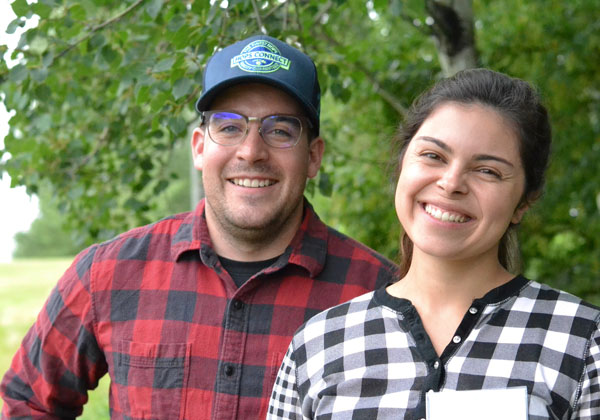
“we are trying to make it more practical, like a farmer could open (the website) and understand really quick what to do.”
– Rafaella Mayrinck, forest engineer
A team of Saskatchewan researchers are creating an online system for farmers in hopes that they’ll see the benefits of planting more trees.
Two University of Saskatchewan (U of S) PhD students showed the interactive website’s abilities to the public for the first time at a Conservation Learning Centre Field Talk on Thursday. The centre is located just outside of Prince Albert.
The website allows landowners to draw a line on a map where they may want a shelterbelt, which is a line of trees that protect farmland from erosion and high winds.
It will then give you a variety of tips, including what species work best on the land, about how much land it will take up and how far apart to plant the trees.
“After years and years of research, (we) finally have the data we need and now we’re actually going to wrap that all up and condense it and distill it into information that is accessible to the public,” said Bryan Mood, one of the students.
Mood has studied in economics, tree science, computer programming, internet-based applications and knowledge mobilization. It all seemed to compile perfectly with the project, he said.
It sparked lots of engagement at the Field Talk, with the Conservation Learning Centre host having to cut off questions to stay on time.
Mood said knowing farmers are interested is encouraging.
“We actually get a lot of important questions that make us think and then in turn our product is better in the end, so already from this event I’ve got two or three ideas to add,” he said.
The other student who spoke about the system is Forest Engineer Rafaella Mayrinck. Her goal is to accurately tell people the carbon content of a tree.
Trees suck up the greenhouse gas that, when released into the air, gradually causes climate change.
“This is very necessary right now. The way that global warming is, it’s something really serious. If we can make people want to plant more trees and use wood for different things, like to build a table or to make wood as part of our lives more, then we can suppress more carbon from the atmosphere and help global warming somehow.”
The website also allows you to enter the diameter of a tree at chest height and it will calculate the carbon content.
“This is the way that we are trying to make it more practical, like a farmer could open it and understand really quick what to do and this is going to be the product of all these many studies,” she said.
“Instead of making every body read papers because I know that’s really boring,” she said with a laugh.
Mood said farmers have recently started removing shelterbelts. When someone in the audience asked why, he said a lot of it is for aesthetic reasons.
Through the Agricultural Greenhouses Gases Program (AGGP), the federal government announced their $1.4 million in funding for the project early last year. Part of the AGGP is to increase farmers’ understanding of greenhouse gas emissions.
*This story has been corrected to fix an error in one of the researcher’s names.

